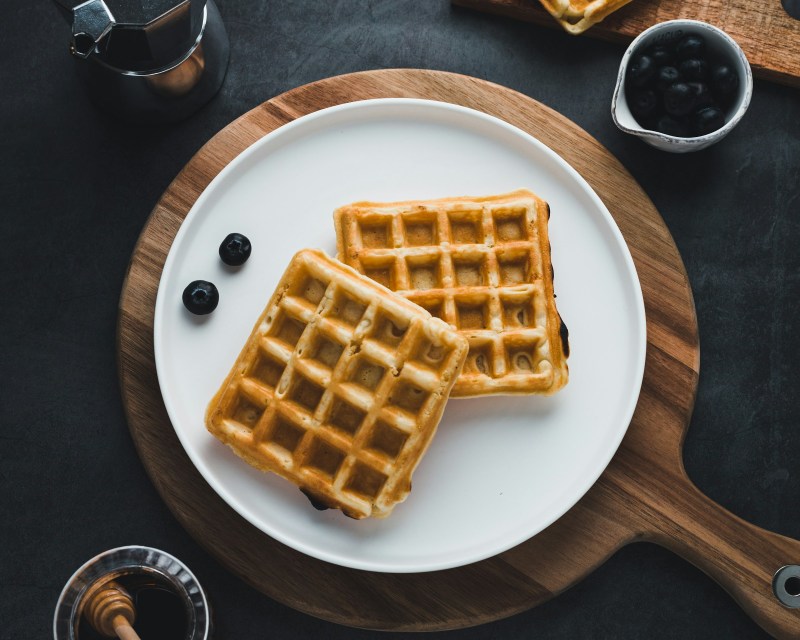
Belgium is something of a headliner when it comes to cuisine. So many of the most glorious foods we love to indulge in originate from this beautiful little European country. Some of the world’s best chocolate and most exquisite beers come from Belgium, making it one of our favorite countries. But then you throw french fries and waffles into the mix, and Belgium very quickly becomes the mecca of the most adored foods world. While we can go around for days about which of these culinary contributions we love most, there’s room to adore them all. But on a lazy Sunday morning, there just isn’t anything better than a perfectly golden, light, fluffy, crispy, buttery Belgian waffle.
True Belgian waffles are unique in a few ways. Firstly, they usually call for the added step of beating egg whites separately, then folding them into the batter in lieu of simply mixing whole eggs in all at once. This incorporates air into the batter and gives Belgian waffles their signature light and airy texture. They also tend to have a bit more sugar than other waffles, making them slightly sweeter. But our very favorite mark of an authentic Belgian waffle is that they’re yeasted, often with Belgium’s favorite beverage – beer.
Using beer in waffle batter is a stroke of genius for a few reasons. The bubbles in the carbonation, much like the beaten egg whites, will create a heavenly light fluffiness. The yeast in the beer will give the waffles a much more complex flavor and gorgeous texture.
This is our very favorite Belgian waffle recipe.

Beer waffle recipe
Every waffle iron is different, but these waffles are meant to be perfectly crisp and beautifully brown, so be sure to cook them long enough to see those golden edges.
Ingredients
- 2 cups self-rising flour
- 12 ounces beer
- 1/2 cup butter, melted
- 1/4 cup milk
- 2 eggs, separated
- 1 tablespoon brown sugar
- 1 teaspoon vanilla extract
- 1/4 teaspoon salt
Method
- Preheat the waffle iron.
- While the iron is heating, whisk together flour, sugar, and salt. Set aside.
- In a medium bowl, whisk together beer, butter, milk, egg yolks, and vanilla. Set aside.
- Mix flour mixture and beer mixture together until just combined, being careful not to overmix.
- In a separate bowl, beat the egg whites until stiff peaks form. Gently fold into the waffle batter.
- Spray the waffle iron with pan spray, then ladle the waffle batter into the iron and cook until golden brown.
- Serve immediately.

Beer waffle tips and tricks
- Taking the time to beat the egg whites separately is part of what makes these waffles so light, airy, and crispy. It’s also one of the things that makes a Belgian waffle Belgian. While you can add the eggs to the batter like any other waffle or pancake batter, this additional step really takes these waffles above and beyond.
- As far as the beer you use, you can really pour in whatever you happen to have in the refrigerator. Depending on the flavor you want in the waffle, you can use anything from a light pilsner to a dark stout. But, of course, the best choice for this recipe is a classic Belgian beer.
- While these are far more sophisticated in flavor than, say, Eggo, feel free to serve these waffles to those under the legal drinking age, as the alcohol in the beer will cook off in the waffle iron.
- Top these waffles with any of your favorite toppings, from butter to honey to maple syrup, but we absolutely love to indulge with a generous drizzling of homemade chocolate sauce.



